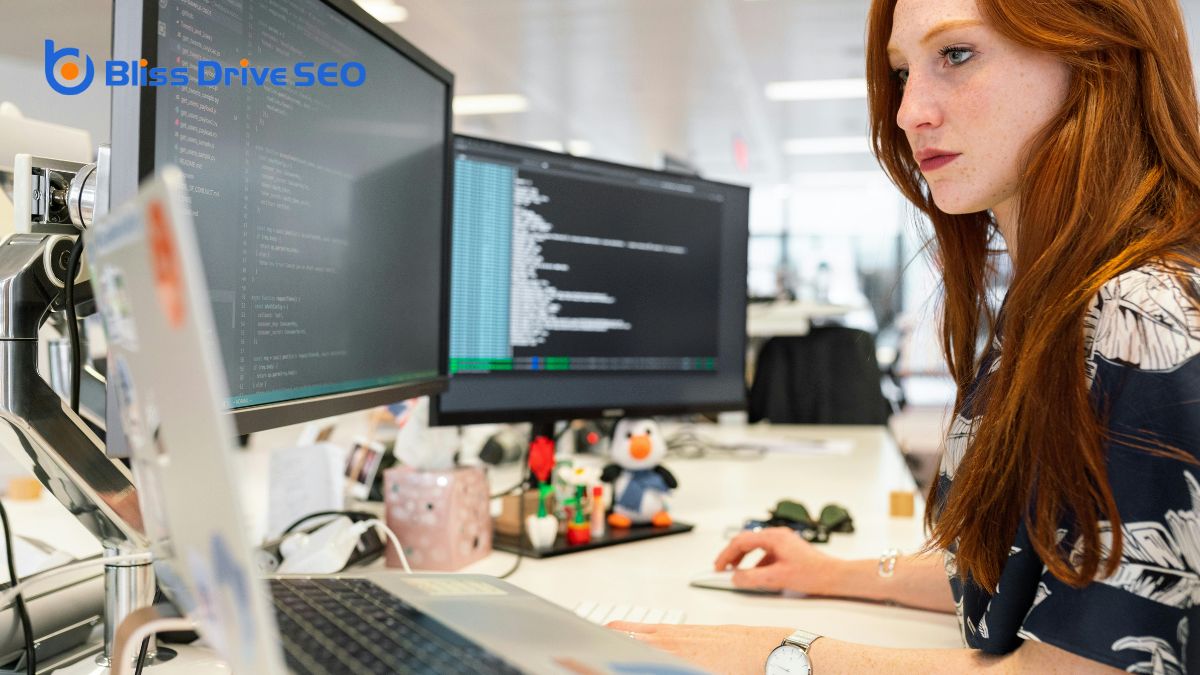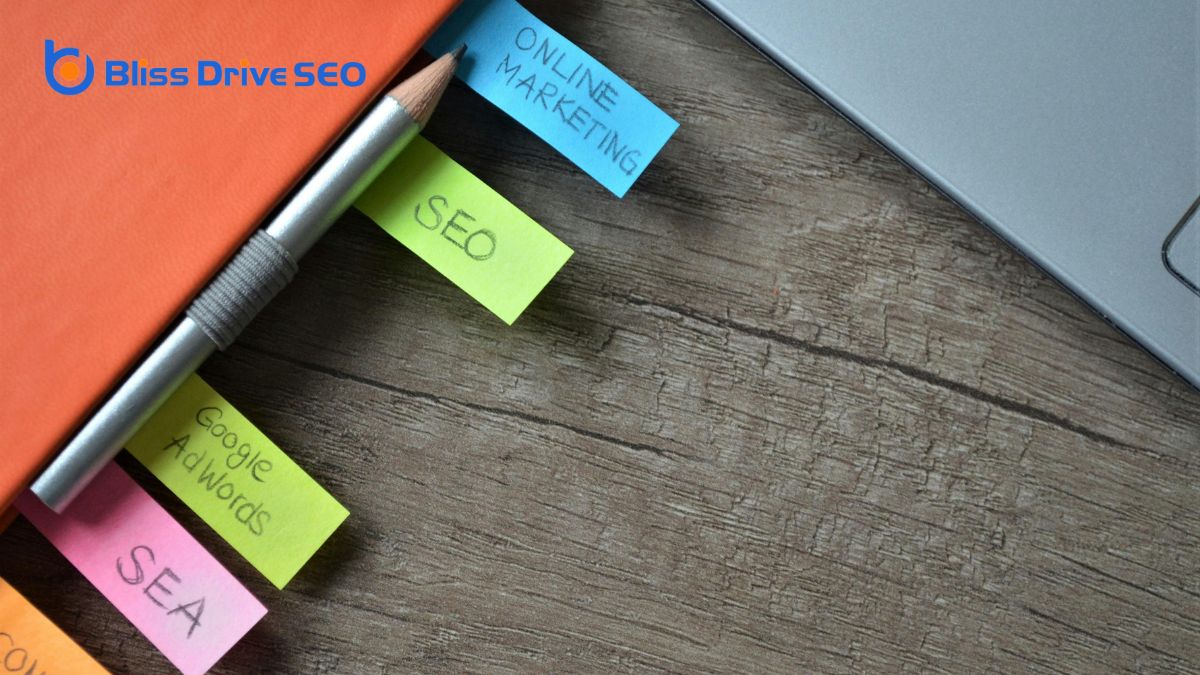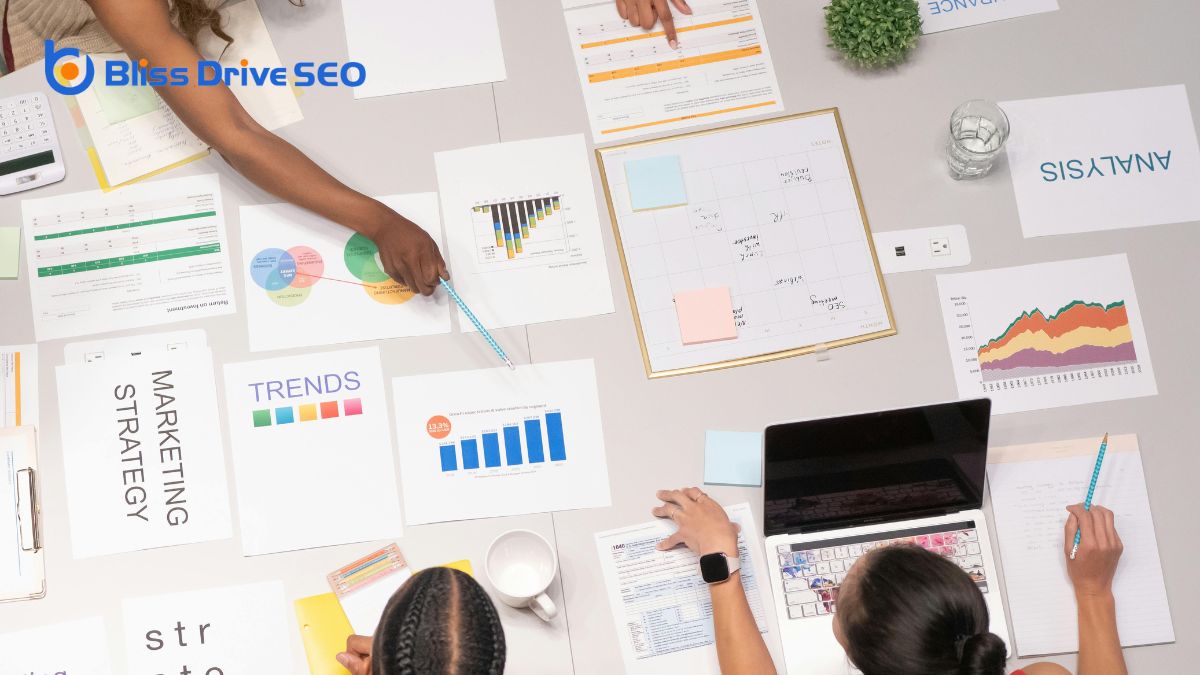Digital Marketing Services
Learn More About Us

Product page load speed is vital for ecommerce SEO because it directly affects user experience and search engine rankingsThe position at which a website appears in the SERP.. If your pages load slowly, users are likely to bounce, causing high bounce rates and lost conversions. Search engines interpret high bounce rates as subpar user experiences, leading to lower rankings. Additionally, faster load times enhance customer satisfaction and increase the chances of purchases, directly boosting sales and revenue. Trimming even a second off your load time can greatly improve engagementThe interactions that users have with a brand’s content on social media. and retention rates. For a more in-depth exploration into optimizing your ecommerce site's speed and reaping these advantages, keep exploring.
A slow product page load speed can significantly impact user experience, leading to higher bounce rates and lost conversions. When your product pages lag, users grow impatient and often leave before seeing what you offerThe specific product or service being promoted by affiliates.. This directly affects your sales because 40% of users abandon sites that take more than 3 seconds to load.
Your page load speed isn't just about quick browsing; it's essential for showcasing products effectively. If customers can't see your products promptly, their browsing experience suffers, and they're less likely to make a purchase.
88% of online consumers are less likely to return to a site after a bad experience, making speed critical for customer retentionStrategies aimed at keeping existing customers engaged and encouraging repeat purchases..
Search engines like Google prioritize faster-loading pages, so improving your load times can enhance your search rankings. Google's Core Web Vitals update underscores the importance of user experience metrics, including loading speed.
Faster pages lead to higher customer satisfaction, which can translate into better sales and loyal customers.

When your product page loads slowly, users are more likely to leave, which increases your bounce rates and hurts your SEO. This poor engagement affects conversion rates and discourages users from returning, as nearly 80% won't come back to a slow site. Optimizing load speed is vital for keeping visitors engaged, boosting conversions, and improving retention rates.
To sum up, slow product page load speed has a direct impact on user engagement by increasing bounce rates. When your product pages take longer than 3 seconds to load, 53% of mobile site visitors are likely to leave immediately. This quick abandonment spikes your bounce rates, which is a critical user engagement metric. High bounce rates signal to search engines that your site isn't meeting user expectations, ultimately hurting your SEO rankings.
Users anticipate fast-loading product pages, and 47% of consumers want a webpage to load in 2 seconds or less. If your load time meets these expectations, you'll see a significant boost in user satisfaction. In fact, for every second you shave off your load time, customer satisfaction can increase by 16%. This heightened satisfaction translates into better user engagement, making visitors more likely to browse further and potentially make a purchase.
Optimizing your product page load speed is crucial. By reducing bounce rates, you enhance user engagement and improve your SEO performance. Search engines prioritize websites that keep visitors engaged, so faster load times can help elevate your site's rankings.
Frequently, slow product page load speeds can wreak havoc on your conversion rates. When visitors arrive at your ecommerce site, they expect a seamless and speedy experience. If your product pages take longer than three seconds to load, up to 40% of them will abandon the site, significantly increasing your bounce rates. This immediate exit not only means lost sales but also negatively affects your SEO rankings, as search engines view high bounce rates as a sign of poor user experience.
A delay of just one second in page load timeThe time it takes for a webpage to fully load, affecting user experience and conversion rates. can result in a 7% decrease in conversions. That may not sound like much, but it adds up quickly, impacting your overall ecommerce performance and revenue. Slow-loading pages drive potential customers away before they even have a chance to explore your products, leading to lost sales opportunities.
Optimizing product page load speeds is essential for reducing bounce rates and improving conversion rates. By ensuring your pages load quickly, you keep potential customers engaged, enhance their shopping experience, and increase the likelihood of them making a purchase. Ultimately, faster load speeds contribute to better SEO rankings and higher revenue, making it a vital factor for ecommerce success.
Improving conversion rates isn't just about making the sale; it's equally about keeping visitors on your site. When your product pages load slowly, you're risking high bounce rates—40% of visitors will abandon a site that takes more than 3 seconds to load. This impacts your user retention rates significantly.
In fact, 47% of consumers expect a web page to load in 2 seconds or less. By optimizing load speeds, you not only retain more users but also enhance your SEO rankings. Search engines prioritize user experience, and slow load speeds signal poor performance, pushing your site down in search results.
Speed optimization on your product pages is essential. It keeps visitors engaged, reducing bounce rates and improving your site's overall performance.
Ensuring quick load times on product pages isn't just a technical necessity—it's a strategic move to maintain a competitive edge. When your pages load swiftly, users are more likely to stay, browse, and ultimately convert. This not only drives conversions but also strengthens your position in the crowded ecommerce market.

In the world of ecommerce SEO, search engines have a clear preference for fast-loading product pages. This isn't just about speed for speed's sake; it's about delivering a superior user experience. When your product pages load quickly, search engines like Google take notice. They prioritize these fast-loading pages because they're more likely to keep users engaged and satisfied, directly influencing your SEO rankings.
Page load speed is essential because faster pages are more easily indexed and ranked higher in search results. When search engines see that your product pages load quickly, they're more likely to boost your visibility. Conversely, slow page load speeds can hurt your search engine rankings, leading to decreased visibility and lower organic trafficVisitors who come to a website through unpaid search engine results..
Google's Core Web Vitals place significant emphasis on page load speed, reinforcing its importance in SEO. By optimizing your product page load speed, you're not only enhancing user experience but also improving your search engine visibility. This means more potential customers can find your products, which can ultimately lead to increased sales and growth for your ecommerce business.
Understanding the significance of Core Web Metrics is necessary for any ecommerce business aiming to boost its SEO performance. Core Web Metrics are key factors that Google considers essential for a good user experience on your product page. These include:
Google uses these Core Web Metrics as a ranking factor, meaning they directly impact your ecommerce SEO. Enhancing these metrics can lead to better rankings and increased visibility for your product pages.
A faster page load speed positively impacts all three Core Web Metrics, enhancing your overall user experience and boosting your SEO performance.
To sum it up, focusing on Core Web Metrics isn't just about meeting Google's standards. It's about providing a seamless, fast, and stable experience for your users, which in turn, improves your ecommerce SEO and helps your product pages rank higher in search results.
When your product pages load quickly, users enjoy a seamless browsing experience that keeps them engaged. This not only reduces bounce rates but also encourages visitors to explore more products.
The result is increased interaction, leading to higher chances of conversion and improved customer satisfaction.
Speed is the unsung hero of a seamless browsing experience on ecommerce sites. When your product pages load quickly, users are more likely to stay and explore. This not only enhances user engagement but also sets the stage for higher conversions. A seamless browsing experience created by fast-loading pages can significantly boost sales and revenue.
Here's why quick load times are essential for your ecommerce site:
Understanding the impact of load speed is important. Slow-loading product pages can hinder the user experience, causing potential customers to click away. By focusing on providing a seamless browsing experience with fast-loading pages, you create an inviting atmosphere for users, encouraging them to spend more time on your site and ultimately increasing your sales and engagement.

Fast-loading pages don't just create a seamless browsing experience; they also play a pivotal role in reducing bounce rates, thereby enhancing user engagement. When your product pages load quickly, users are more likely to stay and explore rather than leave out of frustration. Given that studies reveal a one-second delay in page load time can increase bounce rates by 50%, optimizing load speeds on your ecommerce site isn't just a luxury—it's a necessity.
Slow-loading product pages can drive users away, directly affecting your SEO rankings. Search engines interpret high bounce rates as a signal that your site may not offer valuable content.
In contrast, faster load speeds demonstrate that your site provides a better user experience, encouraging visitors to stay longer and engage more deeply. This increased user engagement doesn't just keep your audience happy; it also tells search engines that your site is worth ranking higher.
Imagine browsing an ecommerce site where every click brings you instantly to a new product page. Fast-loading pages make this a reality, transforming your user experience and boosting your willingness to explore products.
When product page load speeds are optimized, users are more likely to dive deeper into the catalog, extending their browsing sessions and increasing overall user engagement.
Here are four key benefits of improved product page load speeds:
When it comes to conversion rateThe percentage of visitors who complete a desired action, such as making a purchase or filling out a... improvement (CRO) in ecommerce, enhancing your website's load speed can make a world of difference. Slow load times can frustrate online shoppers, causing them to abandon their carts and seek products elsewhere. This directly impacts your conversion rates, potentially leading to significant revenue loss. By focusing on improving site speed, you'll create a smoother user experience that keeps customers engaged and moving through the checkout flows seamlessly.
Fast-loading pages are essential for achieving higher conversion rates. A one-second delay might seem insignificant, but it can significantly affect your bottom line. Enhancing page load speed ensures that your site performs at its best, reducing cart abandonment and encouraging customers to complete their purchases. This streamlined process not only boosts conversions but also fosters customer satisfaction and loyalty.
Furthermore, a fast-loading site provides a competitive advantage in the crowded ecommerce market. It enhances your brand's reputation and credibility, making it more appealing to potential customers. In today's fast-paced digital world, online shoppers expect quick and efficient experiences. By prioritizing conversion rate improvement through enhanced site speed, you'll set your ecommerce business up for success and sustained growth.
Effective image optimization techniques can greatly improve your ecommerce site's load speed and overall performance. By reducing file sizes, you not only enhance loading speed but also boost user experience and SEO rankings. Here are four key techniques to help you optimize your images:

To speed up your ecommerce site, leverage browser caching by setting expiration headers and implementing cache versioning.
Expiration headers reduce server requests while versioning guarantees users get the latest content without conflicts.
This approach optimizes performance, cuts latency, and boosts your SEO rankings.
Setting expiration headers is an important step in leveraging browser caching to boost your ecommerce site's speed. By setting these headers, you allow browsers to cache resources, reducing the need to re-download them on subsequent visits. This caching strategy can improve website performance by storing static files like images, CSS, and JavaScript locally for faster loading times.
Here's why setting expiration headers is vital:
Implementing proper expiration headers is a key part of effective caching strategies, ensuring that users get content quickly without unnecessary reloading. By leveraging browser caching, you not only improve website speed but also contribute to a seamless user experience.
This small tweak can have a significant impact on both your site's performance and your visitors' satisfaction.
Building on the importance of setting expiration headers, another strategy to enhance your ecommerce site's speed is implementing cache versioning. This technique allows browsers to store website resources locally, reducing the need to re-download them on subsequent visits. By doing so, you can greatly improve page load speed by cutting down on unnecessary server requests.
When you implement cache versioning, you ensure browsers only request updated resources when needed. For instance, by appending version numbers or hashes to the filenames of your assets (like CSS and JavaScript files), you can compel browsers to fetch the latest version when changes occur. This method works hand-in-hand with expiration headers, giving you control over how long these cached resources are stored.
Leveraging browser caching through efficient cache versioning not only speeds up your site but also enhances the overall user experience. Faster load times mean happier visitors who are more likely to stay and shop.
Plus, improved page load speed can elevate your SEO rankings, as search engines favor fast-loading websites. By optimizing how resources are cached and retrieved, you're setting your ecommerce site up for success in both performance and search visibility.
When it comes to advanced speed optimization for your ecommerce site, enabling compression of HTML, CSS, and JavaScript files can make a world of difference in load times. This step is pivotal for delivering a faster and more seamless user experience, which directly impacts your search engine rankings and the overall performance of your ecommerce website.
To achieve prime page speedThe time it takes for a webpage to load, affecting user experience and conversion rates., consider these advanced strategies:
Making sure your ecommerce site loads quickly is crucial for both user experience and SEO, and that's where speed testing tools come into play. Google Lighthouse, for example, provides a thorough performance report, pinpointing areas that require enhancement. It's a fantastic way to get an in-depth look into your site's performance.
PageSpeed Insights is another indispensable tool, offering suggestions based on real-world data. This helps you grasp how your site performs under actual user conditions, making the recommendations particularly valuable.
The Pingdom Website Speed Test allows you to analyze load times from various locations worldwide. This global viewpoint helps you guarantee consistent performance for users regardless of their geographical location.
GTmetrix is renowned for its actionable recommendations that can assist you in optimizing website performance and speed. It breaks down complex data into understandable insights, making it easier to implement changes.
WebPageTest offers detailed insights into web page loading speed and performance metricsKey indicators used to measure the effectiveness of affiliate marketing efforts, such as clicks, con.... Providing an in-depth analysis of each stage of the loading process helps you identify bottlenecks that might be slowing down your site.
Using these speed-testing tools can greatly improve your website performance, leading to superior user experiences and enhanced SEO.
You need fast-loading page speeds to keep users engaged and reduce bounce rates. Slow pages frustrate customers, leading to lost sales. Quick load times boost conversions and improve SEO, ensuring a seamless shopping experience.
You need fast page load speeds for SEO because search engines rank sites higher. Slow speeds boost bounce rates and hurt conversions. Focus on speed to enhance user experience, engagement, and overall SEO success.
Page loading speed matters because it directly affects user experience and satisfaction. Slow pages frustrate visitors, causing higher bounce rates. Faster-loading pages improve engagement, boost conversions, and enhance your site's SEO rankings, making it more visible to potential customers.
Page speed greatly impacts user experience and SEO. When your site loads quickly, users stay engaged and are more likely to convert. Google rewards fast-loading sites with better rankings, increasing your visibility and organic traffic.
Improving your product page load speed is crucial for a successful eCommerce SEO strategy. Faster pages enhance user experience, decrease bounce rates, and align with search engine preferences. By concentrating on Core Web Fundamentals, optimizing images, utilizing browser caching, and implementing advanced speed optimization techniques, you'll keep users engaged and content. Make sure to routinely test your site's speed with dependable tools to stay ahead in the competitive eCommerce landscape. Your efforts will surely yield results.
